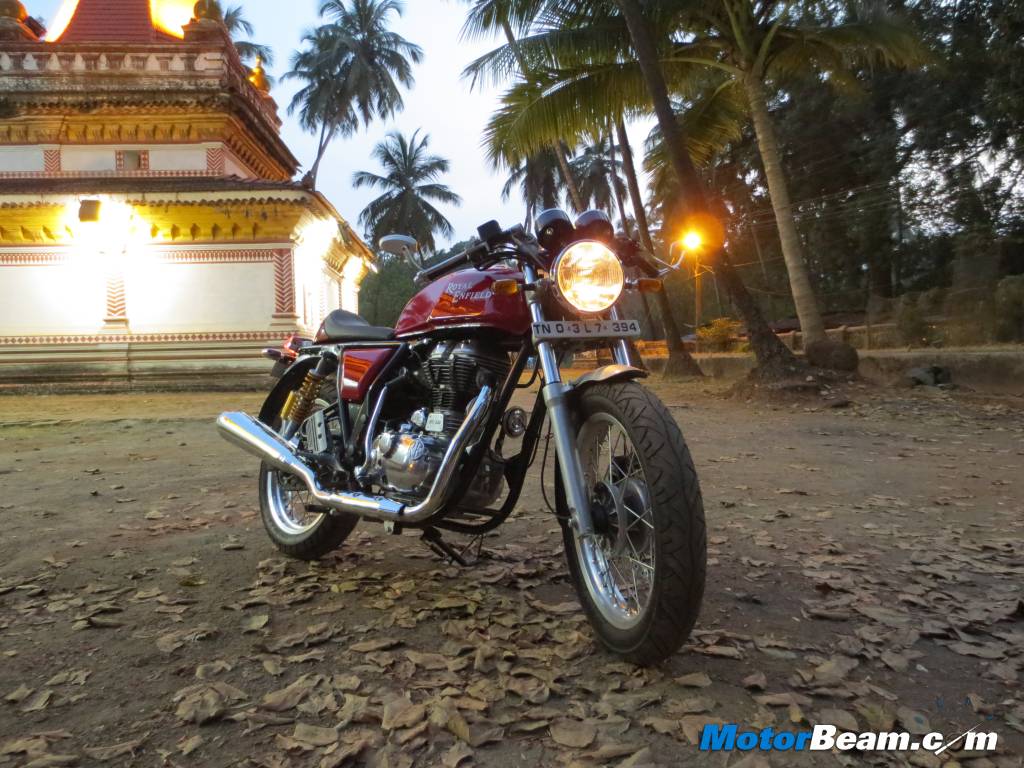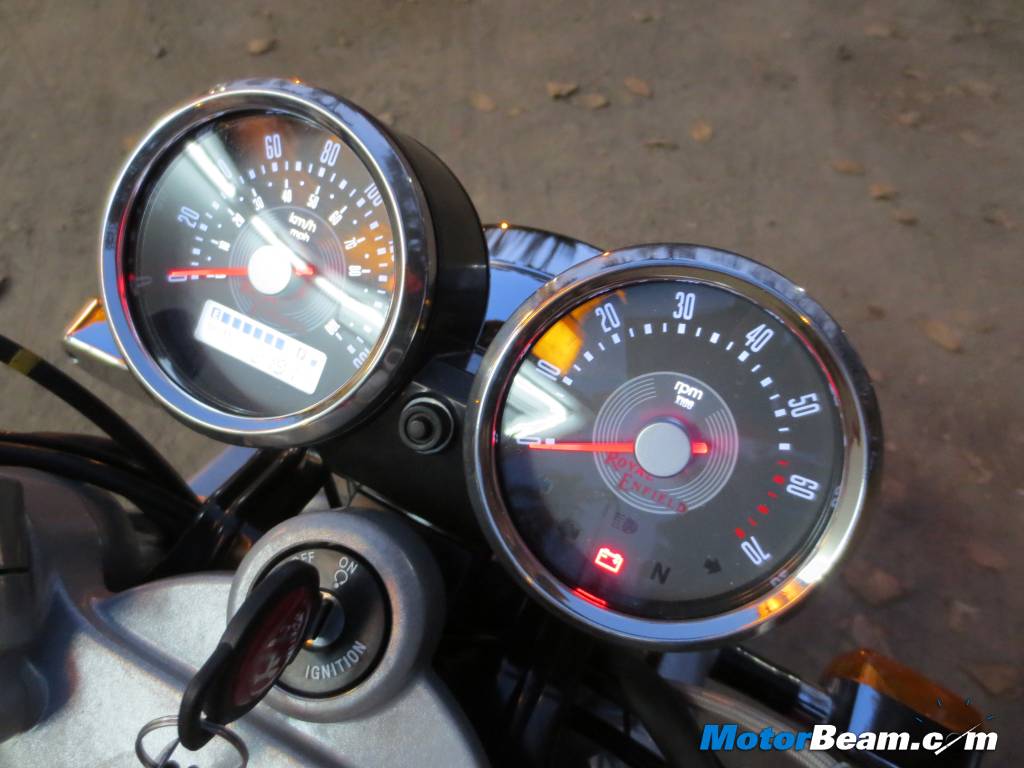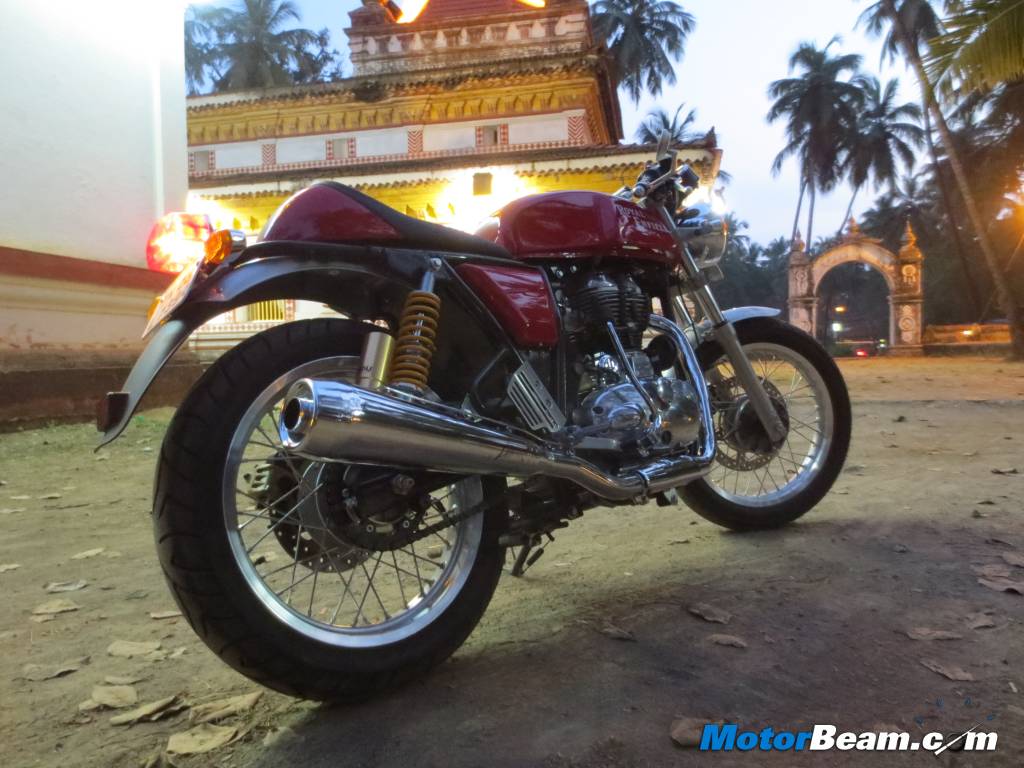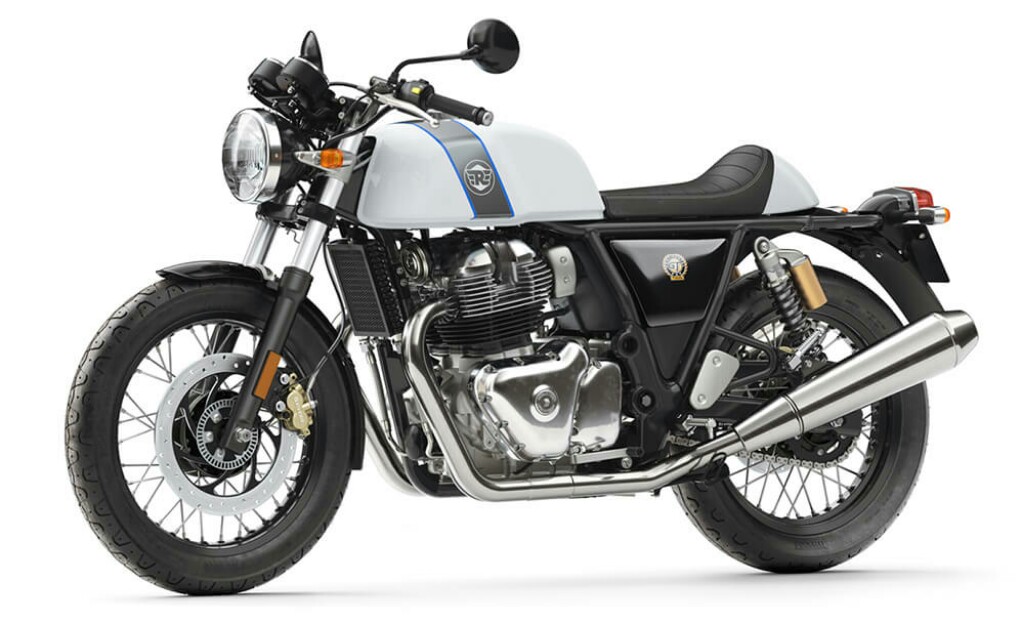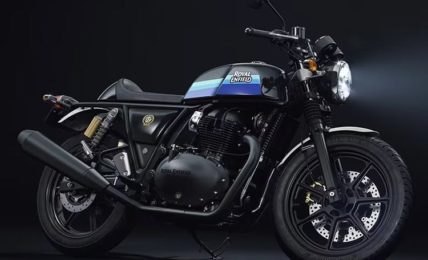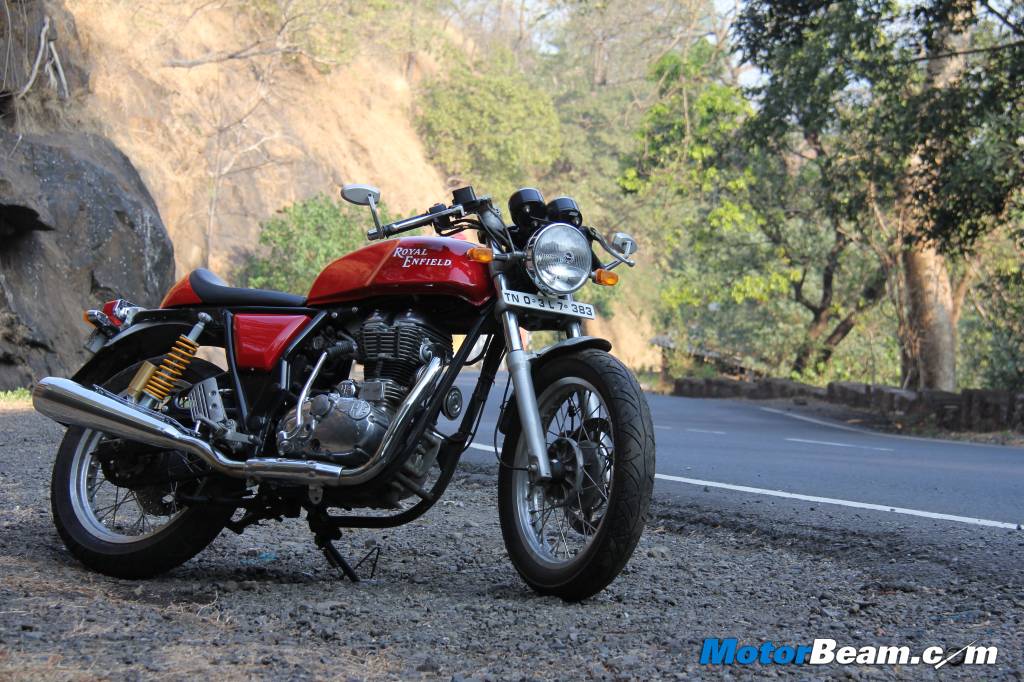Royal Enfield recently launched the Continental GT and we spent quite some time with the bike at the Goa Burn-Up. We also had a chance to interact with the technical team of Royal Enfield and got some insight on the development of the motorcycle. The Continental GT is a completely grounds-up machine with the only part used from existing bikes being the engine, which was re-worked to boost output and enable cleaner revving. However the vibrations are still there and we were quite keen on knowing why the vibes weren’t removed.
Royal Enfield is completely aware about the vibrations on the UCE engine but the company’s engineers don’t want to kill the character of the motor by changing too much on it. We suggested going for liquid-cooling, adding counter balancers and rubber mounts but the technical team reverted saying they tried all this but it only removed 20 percent of the vibrations and couldn’t completely eradicate it. Using a long stroke motor enables a good mid-range and gives the engine the character it has (the exhaust thump, high torque and the powerplant feeling alive). The drawback is the vibrations and coarseness near the redline.
Besides, most Royal Enfield fans love the character of the UCE mill and don’t mind the vibrations that much (if you think otherwise let us know in the comments section below). That said, Royal Enfield is working on improving this engine even further for future models which could be underpinned by the tubular steel frame which made its debut on the Continental GT. The 2013 Continental GT is a modern take on the 1965 Continental GT and when you view both bikes together, you can easily make out the similarities. Royal Enfield has done a fantastic job by doing justice to the original cafe racer.
The Continental GT which we rode at the media ride had an aftermarket exhaust (which is priced at Rs. 2900/-). The stock exhaust isn’t as loud. The bike also had bar end mirrors which are optional and cost Rs. 4000/-. Due to Indian regulations of motorcycles requiring circular mirrors (80 mm circle), the bar end mirrors can’t be offered as standard. These mirrors are fantastic and once you are used to it, you will love the rear visibility it gives, while looking super cool in the process. They are coated with titanium dioxide for a clearer vision. The Conti is the first bike in India to use spoke wheels made of aluminium.
The bike which we tested wasn’t equipped with a crash guard. The company says that not all RTOs demand crash guard as mandatory but in some places it is compulsory. There is no saree guard on the Royal Enfield Continental GT and that’s because the bike has been homologated as a single seater. You can always opt for the double seat which is offered as an accessory at the dealer level. Royal Enfield urges buyers to make changes to their CGTs including power boosts and the company will offer power parts as well. However modifications done outside the company will void the warranty.
The Royal Enfield Continental GT is the fastest, lightest and most powerful bike from the company in production currently. It reaches 0-100 km/hr in around 10 seconds while the true top speed is 135 km/hr. ARAI certified mileage is 41.9 km/l. The bike is available in two colours and deliveries will start in January for red colour and April for yellow colour.


